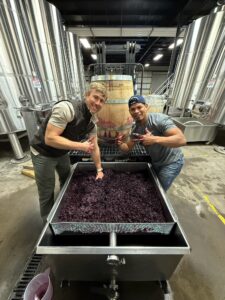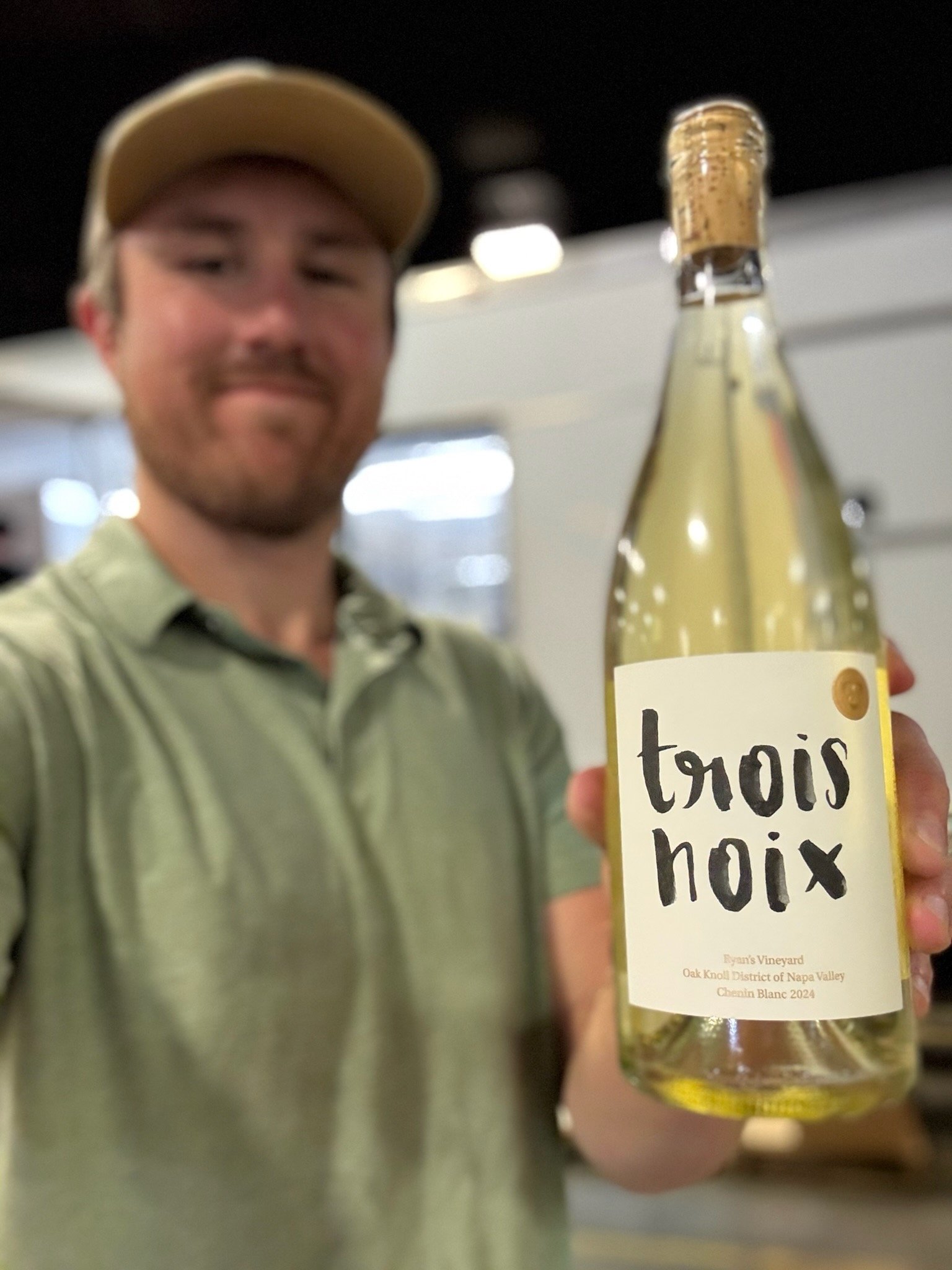2025 Harvest Recap

by Michael Tracy
The 2025 vintage was ideal, rounding out the third consecutive year of favorable winegrowing conditions for the Napa Valley. One of the most critical factors affecting the quality of any vintage is the amount of rainfall received during the “water year,” which starts October 1st of the previous year and ends September 30th of the current year. For water year 2025, Trois Noix’ primary appellation of Oak Knoll enjoyed 104% of average annual rainfall, allowing our vineyards to draw water from the Napa Valley Subbasin Aquifer instead of relying upon much extra irrigation. When our vineyards are well-hydrated: the vines don’t start growing too early in the year during frost season, the key growth stages are well spaced and gradual, and we have less risk of canopy and fruit dehydration getting closer to harvest.
Summer months were quite temperate with one of the coolest Julys in recent history, with an average temperature of 81F in Oak Knoll. This is – partially – why we love this southerly growing region, as the cool fog from the San Pablo Bay slows ripening down, gradually building flavor in the grape while retaining natural acidity. Temperatures ramped up during August and September, as they often do, giving the vines a gentle nudge to move along as the harvest drew closer.
Our official vintage began the last week of August with Muir-Hanna Chardonnay, a classic start to the season for Trois Noix. Picking decisions came easily thanks to sound fruit quality, and there was no need for rushed or time-pressured harvesting as can happen in years with extreme heat events. The fruit across all our vineyards arrived at the winery with outstanding freshness, ripeness, and beautiful color in the reds (kudos to our awesome vineyard managers!). Early tastings of our Chardonnay, Chenin Blanc, and Cabernet Sauvignon indicate that 2025 is another strong vintage for Trois Noix, with the young wines already showing notable concentration and depth of flavor.
Something new for this harvest that I am quite excited about is our expanded use of native fermentations. This year, we fermented 100% of our Muir-Hanna Merlot using indigenous yeast, relying solely upon the yeast brought in with the fruit from the vineyard. Jaime and I decided to do this after a couple of smaller trials in the past, and we are thrilled with the early results. In addition to the Merlot, 100% of our Muir-Hanna Chardonnay was fermented natively (for the third year in a row), and 50% of our newest wine, Ryan’s Chenin Blanc. Native fermentation can highlight the nuances and terroir of the vineyard more vividly, and while a bit riskier in the cellar, has the potential to make a higher quality and more complex wine. We have developed strict winemaking protocols and rigorous cellar hygiene to execute healthy and complete native fermentations, with the end-goal of always producing delicious wines to our Trois Noix family. Cheers!




